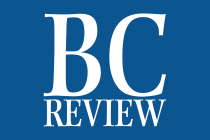Calculating breast cancer risk
Absolute risk versus relative risk and what you need to know about calculating the risk of developing breast cancer. Let’s define both and gauge the risk.
According to the Breast Cancer Research Foundation (bcrf.org), absolute risk, also referred to as cumulative risk, describes the chance that something will happen - such as a breast cancer diagnosis - over a set time. If you’ve heard the commonly cited estimate that one in eight women will be diagnosed with breast cancer in her lifetime, then you’ve encountered a measure of absolute risk.
This calculation comes from estimates showing that the average 35-year-old woman in the U.S. who doesn’t have any known breast cancer risk factors, has a 12.9 percent (roughly one in eight) chance of developing invasive breast cancer by age 90. Absolute risk can be calculated over any amount of time: a year, five years, 10 years, and so on.
When absolute risk is estimated for the course of someone’s life, such as in the estimation above, that’s called lifetime risk. This form of risk calculation is helpful for looking at large, population-wide trends, but it doesn’t account for any one person’s unique risk of breast cancer. In other words: Your individual breast cancer risk could be higher or lower than 12.9 percent given your genes (including whether you carry a breast-cancer associated gene mutation such as BCRA1/2), ancestry, family history, lifestyle, and many other factors.
Relative risk is used to compare risk between groups. When researchers and doctors talk about specific risk factors for breast cancer, they are referring to relative risk. This measure is helpful for considering how things like lifestyle choices play a role in a person’s overall breast cancer risk, but this measure can also be confusing—particularly in news headlines without important context.
In breast cancer, for example, researchers have looked at alcohol use as a risk factor for breast cancer. Heavy drinkers—women who have three or more drinks per day or eight-plus drinks per week—have been found to have a 61 percent higher risk of breast cancer compared to non-drinkers. This doesn’t mean that 61 percent of heavy drinkers will be diagnosed with breast cancer sometime in their lifetimes. It means that their breast cancer risk is 61 percent higher than a non-drinker’s risk.
In a breast cancer clinical trial, a researcher might also calculate relative risk of a breast cancer recurrence based on how one group in the trial responded to treatment compared with how another group responded. Relative risk is a useful measure. Remember that relative risk compares two things and is one part of a larger picture of risk.
Breast Cancer Risk Increases with Age
According to current Surveillance, Epidemiology, and End Results program estimates (SEER.cancer.gov) from the National Cancer Institute (cancer.gov), a woman in the U.S. at certain ages has the following risk of developing breast cancer over the next 10 years:
• Age 30: 0.49% or 1 in 204 people
• Age 40: 1.55% or 1 in 65 people
• Age 50: 2.40% or 1 in 42 people
• Age 60: 3.54% or 1 in 28 people
• Age 70: 4.09% or 1 in 24 people
But these overall averages are for all U.S. women and do not reflect someone’s individual risk of breast cancer. Each person has the responsibility to get tested and know their risk of developing breast cancer. Last year, the U.S. Preventative Services Task Force recommended all average-risk women begin biannual mammograms at age 40.
And let’s not overlook the prevalence of breast cancer in men.An estimated 2,790 men in the U.S. will be diagnosed with breast cancer in 2024.
• Men represent about 1% of all breast cancer diagnoses in the country.
• The average age of breast cancer diagnosis in men is 67 years old.
• Black men are diagnosed at a younger age.
• The average lifetime risk of men developing breast cancer is one in 726.
Early Prevention is Key
It’s up to you. Take the necessary steps to reduce the risk of developing breast cancer. Speak to your health care provider. Schedule your annual exam and ask for a mammogram screening or diagnostic referral. Take the time to perform regular breast self-exams by sight and by touch looking for any outward changes in the appearance of the breasts or if you detect a lump. Regular self-exams can lead to early detection and successful treatment.





